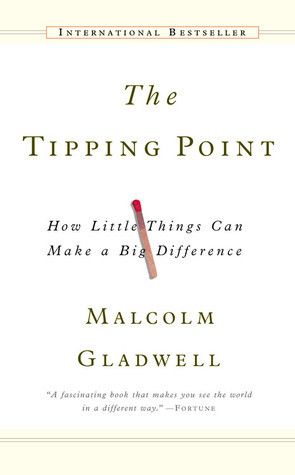Snippets about: Science
Scroll left and right !
Small-Area Variation In Medical Practice
In the 1970s, researcher John Wennberg discovered huge variations in medical practices between similar towns in Vermont. In Stowe, 70% of kids had their tonsils removed by age 15, versus only 20% in nearby Waterbury. Wennberg found that these differences stemmed from varying doctor attitudes in each town, not patient preferences. He termed this "small-area variation" - how local doctor culture shapes medical practices as much as hard science.
Section: 1, Chapter: 1
Book: Revenge of the Tipping Point
Author: Malcolm Gladwell
The Adaptive Logic of Animal Conflict
Dawkins examines how aggressive behaviors in animals are often more restrained than one might expect from a "selfish gene" perspective. He explains that this restraint is actually in the genetic self-interest of individuals, as excessive aggression can be costly. The chapter outlines several key insights:
- Ritualized combat often replaces lethal fighting
- Individuals assess each other's fighting ability to avoid unnecessary conflicts
- Territorial behavior can be an ESS, reducing overall conflict
- Apparently altruistic behaviors can be explained through genetic self-interest
Section: 1, Chapter: 5
Book: The Selfish Gene
Author: Richard Dawkins
Solar Radiation Management Is A Dangerous Gamble
Based on the evidence, Solar Radiation Management is far too risky to consider as any kind of solution to climate change:
- Injecting sulphur into the stratosphere could disrupt vital monsoon rains in Asia and Africa, endangering food supplies for billions
- It would do nothing to stop ocean acidification which threatens marine life
- It would have to be maintained indefinitely, with potentially catastrophic impacts if stopped
- It could reduce the effectiveness of solar power
- There are too many unknowns around regional impacts to ever safely test or deploy
We must reject this kind of dangerous techno-optimism and focus instead on the proven solutions of cutting emissions and transitioning to renewable energy. Protecting people and the planet is incompatible with the risksof geoengineering.
Section: 2, Chapter: 8
Book: This Changes Everything
Author: Naomi Klein
The Eureka Myth
We celebrate the 'eureka moment' - that flash of insight when a scientist or inventor discovers something revolutionary. But this narrative fundamentally misunderstands how progress actually happens.
Consider penicillin. Alexander Fleming discovered it in 1928, but thirteen years later, it had still been used to treat just five human patients, with two dying. The drug became useful only after the US government coordinated hundreds of scientists to solve manufacturing challenges, standardize production, and distribute it widely.
Similarly, Thomas Edison didn't 'invent' the lightbulb - he improved existing designs and, more importantly, built an entire electrical system around it, including generators, wires, sockets, switches, and billing meters. In both cases, the initial discovery was just the beginning.
Real progress comes from three crucial steps that follow discovery:
1. Tinkering - improving and refining the initial concept
2. Embodiment - creating the systems and infrastructure around the core invention
3. Scaling - making it widely available and affordable
Section: 1, Chapter: 5
Book: Abundance
Author: Ezra Klein, Derek Thompson
The Paradox Of The Locust Swarm
Locust swarms demonstrate a perplexing dynamic that mirrors aspects of modern human society. At low densities, locusts behave as individuals, their actions uncoupled from those around them. At medium densities, they form semi-coordinated clusters, but these clusters are prone to sudden directional changes and function independently of one another.
However, at high densities, locusts undergo a behavioral phase shift, coalescing into a unified swarm that moves together. Surprisingly, despite the swarm's coordinated movement, the overall direction of the swarm is highly unpredictable and can shift abruptly based on slight perturbations. This "paradox of the swarm" - the coexistence of individual order and collective unpredictability - characterizes many modern human systems and helps explain our vulnerability to sudden crises.
Section: 1, Chapter: 5
Book: Fluke
Author: Brian Klaas
The Microbiome of Motherhood
During pregnancy, a woman's microbiome—the ecosystem of bacteria, fungi and other microorganisms living on and within her—undergoes significant changes. This includes shifts in vaginal, gut and skin microbiota, which may impact both physical and mental health.
One mother documented these changes by examining her own bacteria under a microscope, finding new colonies and patterns after childbirth. This biological transformation mirrors the broader theme of matrescence: we are never truly singular beings, but rather complex ecosystems constantly in flux.
These microbial changes reflect our fundamental interconnectedness with the wider living world. As we learn more about how microorganisms influence everything from digestion to mood, the boundary between 'self' and 'environment' becomes increasingly blurred, challenging our notions of individual identity.
Section: 3, Chapter: 5
Book: Matrescence
Author: Lucy Jones
The Illusion of Central Control
The author challenges the notion of a centralized "self" controlling the body. Instead, he proposes that behavior emerges from the complex interactions of genes, neurons, and environmental stimuli. This decentralized view of behavior has several implications:
- There is no single "control center" in the brain
- Behavior is the result of competing genetic influences
- The appearance of purposeful action arises from underlying genetic programming
- Consciousness and free will may be illusory byproducts of this system
This perspective encourages us to reconsider their understanding of agency and decision-making in both humans and animals.
Section: 1, Chapter: 4
Book: The Selfish Gene
Author: Richard Dawkins
The Origin of Life
This chapter delves into the hypothetical origins of life on Earth, exploring how the first self-replicating molecules might have arisen in the "primordial soup" of the early planet. Dawkins describes how these simple replicators would have competed for resources, with more efficient replicators outcompeting others. Over time, these replicators developed increasingly complex "survival machines" (bodies) to help them reproduce more effectively. The author draws a direct line from these primordial replicators to modern genes, establishing them as the fundamental units of evolution and the driving force behind all life on Earth.
Section: 1, Chapter: 2
Book: The Selfish Gene
Author: Richard Dawkins
The Body as a Survival Machine
Dawkins introduces the concept of the body as a "survival machine" for genes. He explains that organisms are intricate, purposeful constructions designed to propagate the genes they contain. The chapter explores how genes influence behavior through their effects on the nervous system, drawing analogies between animal bodies and man-made machines. While genes "program" the overall structure and function of the body, they do not directly control moment-to-moment actions.
Section: 1, Chapter: 4
Book: The Selfish Gene
Author: Richard Dawkins
mTOR, Rapamycin and the Future of Slowing Aging
The mTOR enzyme is emerging as a central regulator of aging, and a key target of anti-aging interventions:
- mTOR acts as a control center, sensing nutrient levels and shifting the cell between growth and maintenance.
- When nutrients are plentiful, mTOR promotes growth and reproduction. When nutrients are scarce, it dials down growth and ramps up cell cleanup and recycling.
- Inhibiting mTOR (either through CR or rapamycin) seems to put the cell in a more youthful, resilient state - improving autophagy, stress resistance, mitochondrial function and more. These are the same hallmarks of longer-lived animals.
- Rapamycin powerfully inhibits mTOR. That suggests it could be used as an anti-aging drug. Animal studies show rapamycin extends lifespan and healthspan.
- Early human studies hint that rapamycin may actually enhance immune function, protect the heart and prevent age-related diseases, though more research is needed.
mTOR is one example of how understanding the mechanisms of aging could lead to targeted interventions to slow the entire aging process. That's a paradigm shift from just treating individual age-related diseases reactively.
Section: 1, Chapter: 5
Book: Outlive
Author: Peter Attia
Kinship and Genetic Relatedness
Chapter 6 goes into the intricacies of kin selection and how genes promote their own survival through relatives. Dawkins explains Hamilton's rule, which states that altruistic behavior will be favored by natural selection when the cost to the altruist is outweighed by the benefit to the recipient, multiplied by their degree of genetic relatedness. This concept helps explain various forms of apparent altruism in nature, from parental care to the complex social structures of insects like ants and bees.
Section: 1, Chapter: 6
Book: The Selfish Gene
Author: Richard Dawkins
Misconceptions About Group Selection
Dawkins systematically dismantles the theory of group selection, which suggests that organisms act for the good of their species. He points out several flaws in this thinking, such as the inability to explain how altruistic traits would initially spread within a population.
The author argues that selfish individuals would invariably outcompete altruistic ones within a group, and there's no clear mechanism to prevent "cheating" in a group-selection model. Instead, Dawkins proposes that gene-level selection provides a more robust and logically consistent explanation for observed behaviors in nature, including those that appear altruistic on the surface.
Section: 1, Chapter: 1
Book: The Selfish Gene
Author: Richard Dawkins
REM Sleep And NREM Sleep: Distinct Neurological Profiles
REM sleep and NREM sleep are characterized by very different patterns of brain activity:
NREM sleep:
- Dominated by slow, synchronous brain waves
- Reflects a relatively quiescent, inactive brain state
- Plays a key role in memory consolidation and learning
REM sleep:
- Characterized by fast, desynchronized brain waves similar to wake
- Increased activity in visual, motor, emotional and memory centers
- Plays a key role in emotional processing, creativity and memory integration
Switching between NREM and REM sleep through the night allows the brain to carry out distinct but complementary cognitive processes that are vital for learning, memory, emotional health and overall brain function.
Section: 3, Chapter: 9
Book: Why We Sleep
Author: Matthew Walker
The Youth Drought in Science
American science is aging at an alarming rate. In the early 1900s, many revolutionary scientists like Einstein, Heisenberg, and Schrödinger did their breakthrough work in their twenties and thirties. Their youth may have been vital to their paradigm-breaking insights.
Today, young scientists are becoming an endangered species. The share of NIH-funded scientists who are thirty-five years old or younger declined from 22 percent in 1980 to less than 2 percent by the 2010s. This dramatic shift reflects how scientific funding has become biased against risk-taking.
The problem isn't just that young scientists struggle to get funding. It's that the entire system now rewards safe, incremental research over bold new ideas. As James Evans, a University of Chicago sociologist, puts it: 'Too many projects get funding because they are probable. But science moves forward one improbability at a time.'
Section: 1, Chapter: 4
Book: Abundance
Author: Ezra Klein, Derek Thompson
The 'Grantsmanship' Problem in Scientific Funding
Scientific funding has increasingly rewarded researchers who excel at writing grants rather than those with the most innovative ideas. As Pierre Azoulay, an MIT economist who studies scientific productivity, notes, 'There is a hidden curriculum for navigating grants, and it is critical for success as a scientist today. But those skills are weakly correlated with scientific potential, and they might be negatively correlated.'
This emphasis on 'grantsmanship' has created a system that rewards those who master bureaucracy rather than those who push boundaries. Scientists now spend up to 40% of their time writing grant applications and administrative documents rather than conducting actual research. Funding agencies sometimes take seven months or longer to review applications.
As John Doench of the Broad Institute asks, 'Why are we doing this? Because they're afraid that I'm going to buy a Corvette with the grant money?' While accountability matters, the current system's procedural burden has become counterproductive.
Section: 1, Chapter: 4
Book: Abundance
Author: Ezra Klein, Derek Thompson
The Permanence of Maternal Change
Recent scientific research confirms that matrescence creates lasting neurological changes. A groundbreaking study showed that pregnancy-induced brain changes remain for at least six years after birth, with researchers able to identify whether a woman had been pregnant by examining brain scans with 91.67% accuracy.
Further research indicates mothers have larger areas of grey matter in their brains for decades, suggesting these alterations may be permanent. Just as adolescence transforms us irrevocably, so too does matrescence create a fundamentally different brain architecture.
These findings challenge our understanding of identity as fixed and unchanging. They suggest that major life transitions like matrescence don't simply add experiences to our existing selves, but rather transform us at a cellular and neurological level into new beings.
Section: 5, Chapter: 13
Book: Matrescence
Author: Lucy Jones
Two Types Of Sleep: NREM And REM
There are two main types of sleep that the brain experiences:
NREM (non-rapid eye movement) sleep:
- Includes deep sleep
- The brain exhibits long-wave patterns of electrical activity
- Helps with physical restoration and memory consolidation
REM (rapid eye movement) sleep, also known as dream sleep:
- The brain is very active, similar to wake, but the body is paralyzed
- Plays a key role in emotional processing and creativity Both NREM and REM sleep alternate in a cyclical pattern through the night, with NREM dominating the first half and REM dominating the second half. Both are critical for mental and physical health.
Section: 1, Chapter: 3
Book: The Power of Habit
Author: Charles Duhigg
The Fitness Beats Truth Theorem
Our perceptions of reality have been shaped by evolution to be useful for our survival, not to accurately reflect the truth. The Fitness Beats Truth theorem, developed by evolutionary biologists and cognitive scientists, shows that natural selection will always favor perceptual strategies that enhance reproductive fitness over those that provide a more truthful representation of the world.
Just as a computer's desktop interface is a useful but inaccurate depiction of the machine's actual workings, our brains present us with a simplified, sometimes illusory model of reality that nonetheless enables us to effectively navigate our environment. Recognizing that our perceptions are inherently biased and limited is crucial for understanding how we make sense of the world.
Section: 1, Chapter: 4
Book: Fluke
Author: Brian Klaas
The Invisible Women of Science
Women are underrepresented in science, technology, engineering and math (STEM) fields, making up only 28% of the STEM workforce. This gender gap is not due to innate differences in aptitude, but to systemic barriers and biases that push women out of STEM:
- Gendered stereotypes that portray STEM as a masculine domain and assume that women lack the natural brilliance to succeed
- Lack of representation of women in STEM textbooks, media and popular culture, sending the message that STEM is not for girls
- Biased hiring, promotion and funding practices that favor men and penalize women, especially mothers
- Hostile work environments that tolerate sexual harassment, discrimination and unequal pay
- Lack of family-friendly policies and flexible career paths that force women to choose between STEM and family
Section: 3, Chapter: 9
Book: Invisible Women
Author: Caroline Criado Perez
A Single Infection At Biogen Sparked Global Spread
In February 2020, executives from biotech company Biogen held a conference in a Boston hotel. A single infected attendee, likely from Europe, sparked a massive outbreak. Genetic sequencing shows that roughly 100 people caught COVID at the event, then rapidly spread it worldwide as they flew home - to 29 U.S. states and at least 4 continents. The strain from this "superspreader event", dubbed C2416T, likely infected hundreds of thousands globally. Demonstrating how quickly one infection in the right environment can fuel an epidemic.
Section: 2, Chapter: 6
Book: Revenge of the Tipping Point
Author: Malcolm Gladwell
The Scientific Project Reject Infallibility
"Scientific culture has no comparable holy book, nor does it claim that any of its heroes are infallible prophets, saints, or geniuses. The scientific project starts by rejecting the fantasy of infallibility and proceeding to construct an information network that takes error to be inescapable."
Section: 1, Chapter: 4
Book: Nexus
Author: Yuval Noah Harari
Enlightenment And The Scientific Worldview
While Buddhism and science are distinct traditions with different methods, the author argues they converge in presenting a model of reality at odds with our intuitive, everyday experience.
Science, for instance, tells us that tables and trees are mostly empty space - tiny particles held together by invisible forces, in constant motion and flux. Physics and neuroscience suggest that colors, sounds and other sensations don't exist "out there," but are constructions of the brain.
Similarly, Buddhist contemplatives report that on close examination, the seemingly solid, independent self dissolves into a flowing stream of sensations, thoughts and impressions, all "empty" of inherent existence. The world appears as a seamless, luminous display of interdependent appearances, like a rainbow or a mirage.
In both cases, penetrating beneath the surface of ordinary perception reveals a more subtle, fluid, insubstantial reality.
Section: 1, Chapter: 15
Book: Why Buddhism Is True
Author: Robert Wright
The Accidental Discovery Of GLP-1
In 1984, Daniel Drucker, a young Canadian scientist, accidentally discovered GLP-1 while studying the inner workings of glucagon genes in a run-down lab in Massachusetts. He found that GLP-1 could stimulate the creation of insulin, a crucial discovery that would later lead to the development of new diabetes and weight loss drugs.
Scientists discovered that the venom of the Gila monster lizard contained a copy of GLP-1 that lasted much longer in the human body than natural GLP-1. This led to the development of drugs that could elevate GLP-1 levels for a whole week, bringing blood sugar under control for diabetics. Researchers then found these drugs also caused significant weight loss in obese people.
Section: 1, Chapter: 1
Book: Magic PIll
Author: Johann Hari
Laplace's Demon And The Limits Of Prediction
Laplace proposed a thought experiment involving an omniscient being (Laplace's demon) that could know the precise details of every atom in the universe. With such perfect information, Laplace argued, this being could predict the future with absolute certainty.
However, chaos theory, as discovered by Edward Norton Lorenz, shows that even in deterministic systems, microscopic differences in initial conditions can lead to vastly different outcomes over time. This means that even if Laplace's demon existed, the tiniest measurement error would cause its predictions to become wildly inaccurate. Perfect prediction is therefore impossible, highlighting the fundamental uncertainty and unpredictability of our world.
Section: 1, Chapter: 1
Book: Fluke
Author: Brian Klaas
What Can Geoengineering Teach Us About Problem-Solving?
Levitt and Dubner profile an audacious proposal by Intellectual Ventures (IV), a research lab founded by former Microsoft executive Nathan Myhrvold:
- Pumping sulfur dioxide into the stratosphere to dim sunlight (mimicking Mt. Pinatubo eruption)
- Deploying a fleet of ships to brighten marine clouds and increase Earth's reflectivity
- Painting roofs/roads white to reflect more heat back to space
IV contends they could be cheaper and faster than carbon mitigation alone. The sulfur concept could offset a century's worth of warming for $250M/year - orders of magnitude less than the cost of typical carbon policies.
Levitt and Dubner argue geoengineering demonstrates how reframing problems can open up new solution spaces. By moving beyond the prevailing paradigm that emission cuts are the only answer, IV is able to contemplate more radical interventions.
Section: 1, Chapter: 5
Book: Super Freakonomics
Author: Steven D. Levitt , Stephen J. Dubner
The Dawn of Maternal Neuroscience
'This is unlike any other brain changes I've investigated before. Something very powerful is reshaping our brains.'
Section: 3, Chapter: 6
Book: Matrescence
Author: Lucy Jones
The Birth of Brownian Motion
The chapter discusses the discovery and explanation of Brownian motion, the random movement of particles suspended in a fluid. Robert Brown first observed this phenomenon in 1827 when studying pollen grains in water. Initially mistaken for a sign of life, it was later shown to occur with any small particles.
The true explanation came from Albert Einstein in 1905, who demonstrated that the motion was caused by the bombardment of the particles by invisible molecules in the fluid. This discovery was pivotal in confirming the existence of atoms and molecules, and it exemplifies how apparent randomness at one level (the motion of the particle) can be explained by underlying order at another level (the behavior of molecules). Brownian motion has since become a fundamental concept in fields ranging from physics to finance.
Section: 1, Chapter: 8
Book: The Drunkard's Walk
Author: Leonard Mlodinow
Science and Human Values
So while science alone cannot determine human values, it can certainly inform and influence them. As powerful technologies like artificial intelligence and genetic engineering advance, we will need to grapple with the ethical implications of scientific progress.
This means fostering dialogue and collaboration between scientists, ethicists, policymakers, and the public. It means acknowledging the ways in which science and values intersect, rather than pretending they are separate. Most of all, it means using our growing knowledge to make wise choices - for ourselves, for society, and for the planet.
Section: 1, Chapter: 3
Book: Homo Deus
Author: Yuval Noah Harari
The Ape That Conquered The World
Homo sapiens - our species - has had an extraordinary impact on the world. Starting from humble origins in East Africa, we have spread to every continent, reshaped ecosystems, and domesticated other species.
This journey began around 70,000 years ago with the Cognitive Revolution. It saw the emergence of new ways of thinking and communicating, including the ability to create and believe in imagined realities. This allowed large numbers of strangers to cooperate effectively.
The next major milestone was the Agricultural Revolution, which began around 12,000 years ago. By domesticating plants and animals, we were able to greatly increase the amount of food available. This allowed human populations to grow exponentially and laid the foundation for the rise of cities, kingdoms, and empires.
Finally, the Scientific Revolution, which began just 500 years ago, gave us unprecedented power to understand and manipulate the world around us. Combined with the Industrial Revolution, it has transformed almost every aspect of human life.
Section: 1, Chapter: 2
Book: Homo Deus
Author: Yuval Noah Harari
Cryogenic "Frozen Zoo" Preserves Cells of Endangered Species
As species hurtle toward extinction, some scientists are building a modern ark, not with two of every animal, but with their frozen cells. The "Frozen Zoo" at the San Diego Zoo's Institute for Conservation Research houses the largest collection of its kind, with cell lines from over 1,000 species, most still extant but some already gone.
Among the zoo's residents are the po'ouli, a Hawaiian honeycreeper that went extinct in 2004, and the northern white rhino, functionally extinct with only two females remaining. These cryo-preserved cells offer a potential lifeline, a way to preserve genetic diversity and perhaps even resurrect lost species. But as more and more species require high-tech interventions to survive, the frozen zoo serves as a poignant symbol of the depths of the extinction crisis.
Section: 1, Chapter: 13
Book: The Sixth Extinction
Author: Elizabeth Kolbert
Does Ozempic Rob Food Of Both Pleasure And Pain?
The dominant theory is that Ozempic curbs appetite by dialing down food rewards. But brain imaging suggests it may be more about dialing up food "anti-rewards":
- Normally fatty/sugary food triggers a big dopamine (reward chemical) spike
- Ozempic doesn't seem to numb this food "high" - dopamine still spikes
- But on Ozempic, the brain's "aversion centers" also light up intensely to fatty/sugary food
- These zones generate negative feelings - disgust, fear, anxiety, restraint
So Ozempic may not rob food of pleasure so much as pair that pleasure with equal and opposite pain - an "aversion signal" that overwhelms reward and drives behavior change.
Section: 1, Chapter: 7
Book: Magic PIll
Author: Johann Hari
'Doomed to Succeed': How Scientific Research Lost Its Edge
'We want the most life-saving, life-enhancing, productivity-expanding inventions and innovations possible. That means we need a system that is designed to take more risks, and accept more failures, as a part of the scientific process. The problem isn't that too much science is "doomed to fail." It's the opposite. Too much science is doomed to succeed—fated to duplicate what we know rather than risk failure by reaching into the unknown.'
- James Evans
Section: 1, Chapter: 4
Book: Abundance
Author: Ezra Klein, Derek Thompson
The Dangers Of Excluding Pregnant Women From Studies
Pregnant women have historically been excluded from clinical trials and research due to ethical concerns about fetal harm and liability. However, this knowledge gap makes their care more dangerous:
- Medication dosages based on male bodies may be incorrect for women
- No data on drug interactions with pregnancy
- Women with conditions like epilepsy or cancer have fewer treatment options
- Racial disparities in research participation and outcomes
The chapter argues there are ethical ways to include pregnant people in research via observation, analysis of existing real-world data, and carefully designed studies. Doing so could save lives and improve care.
Section: 2, Chapter: 6
Book: I'm Sorry for My Loss
Author: Rebecca Little, Colleen Long
Evolutionarily Stable Strategies
Chapter 5 introduces the concept of Evolutionarily Stable Strategies (ESS), developed by John Maynard Smith. An ESS is a behavioral strategy that, if adopted by most members of a population, cannot be outcompeted by any alternative strategy. Dawkins uses game theory to explain how certain behaviors, particularly those related to aggression and cooperation, can become stable within a population. The chapter explores various scenarios, such as the famous "Hawk-Dove" game, to illustrate how seemingly altruistic or restrained behaviors can emerge from selfish genetic interests.
Section: 1, Chapter: 5
Book: The Selfish Gene
Author: Richard Dawkins
The Slow Pace Of TB Research
Antibiotic resistance is a complex and many-tentacled beast—countless factors from overprescription to antibiotic use in livestock have contributed to it. But in considering the rise of multidrug-resistant tuberculosis in particular, it's important to note that we are in this mess first and foremost because we stopped trying to develop new treatments for tuberculosis. The real issue is not that TB is uncommonly good at selecting for resistance. The real problem is that in the forty-six years between 1966 and 2012, we developed no new drugs to treat tuberculosis.
In the last couple decades as economic incentives have shifted, we've been able to develop powerful new medications to treat TB, including bedaquiline and delamanid. When markets tell companies it's more valuable to develop drugs that lengthen eyelashes than to develop drugs that treat malaria or tuberculosis, something is clearly wrong with the incentive structure.
Section: 4, Chapter: 14
Book: Everything is Tuberculosis
Author: John Green
The Flaws Of The Uncertainty Principle
The Uncertainty Principle in quantum physics is often misinterpreted and used to justify claims about unknowability.
However:
- The uncertainties in QM are miniscule and average out for any macro object, so QM uncertainties don't actually impact predictions in real life
- In contrast, uncertainties in society, economics, politics etc. are massively impactful
- It's a red herring to use QM to say "there are limits to knowledge" and ignore real unpredictability
- If someone cites the Uncertainty Principle to discuss real-world uncertainty, they are likely a fraud
Section: 3, Chapter: 18
Book: The Black Swan
Author: Nassim Nicholas Taleb
The Burden of Knowledge
Why has scientific progress slowed in many fields despite more scientists, more funding, and better tools than ever before? Economist Benjamin Jones proposes an elegant explanation called 'the burden of knowledge.'
The theory starts with two observations: nobody is born an expert, and expertise in any field grows over time. As we accumulate knowledge, scientists must spend more years mastering what's already known before they can contribute something new. They must climb higher to reach the frontier of knowledge.
Consider element discovery: in the 1600s, phosphorus was discovered by a German alchemist boiling urine. In contrast, discovering element 117 (tennessine) required creating a rare isotope, sending it to a nuclear facility where it was bombarded with calcium ions for 150 days, and using specialized equipment to detect its fleeting existence. The low-hanging fruit has been picked, forcing us to climb higher and use more complex tools to make new discoveries.
Section: 1, Chapter: 4
Book: Abundance
Author: Ezra Klein, Derek Thompson
20% Of Infections May Cause 80% Of Spread
Growing evidence suggests that COVID and other infectious diseases follow the "Pareto principle" - that roughly 20% of cases may cause 80% of transmission. So-called "superspreaders" seem to be significantly more contagious than the average infected person, sparking large clusters. This may be due to:
- Biological factors like higher viral load
- Behavioral factors like interacting with many people
- Number and type of contacts
- Environment and setting
This highly skewed distribution means that finding and containing superspreaders early is key to controlling outbreaks.
Section: 2, Chapter: 6
Book: Revenge of the Tipping Point
Author: Malcolm Gladwell
The Hard Problem Of Social Science
Even when technical issues like p-hacking are addressed, social science faces a "Hard Problem" that stems from the radical uncertainty of the social world:
- Equifinality: Many models can fit the same data, so drawing firm conclusions is difficult.
- Reflexivity: Studying social phenomena can alter their dynamics, invalidating models.
- Causal density: Outcomes arise from complex, ever-shifting interactions, not isolatable variables.
- Knightian uncertainty: The range of possible futures is often unknowable, rendering precise probability estimates meaningless.
Section: 1, Chapter: 11
Book: Fluke
Author: Brian Klaas
Epidemics Are Not Wild And Unruly
Gladwell argues that contrary to popular belief, epidemics and social contagions are not mysterious, wild phenomena that happen at random. They follow rules and have boundaries. They are subject to "overstories" - the narratives and ideas circulating in a culture. Epidemics can change drastically when they reach a tipping point. And they are driven by a small number of influential people who can be identified.
Section: 1, Chapter: 1
Book: Revenge of the Tipping Point
Author: Malcolm Gladwell
The Dance Of Science And Story
One of the defining dynamics of the modern age is the interaction between science and story. Science seeks to understand the world as it objectively is, while stories create a sense of meaning and purpose.
The Scientific Revolution unleashed an unprecedented pursuit of knowledge about how the universe works. This avalanche of discoveries gave us immense power to manipulate the world around us. But it also undermined traditional sources of meaning, from religion to monarchy.
At the same time, new humanist stories arose to fill the vacuum, asserting the primacy and potential of the individual.
- Liberalism celebrated individual rights and freedoms
- Socialism called for equality and justice for all
- Modern art glorified individual expression and creativity
These stories gave us a sense of purpose and identity even as science stripped the world of its magic and mystery.
Section: 2, Chapter: 5
Book: Homo Deus
Author: Yuval Noah Harari
Science Cannot Determine Human Values
Science has become the most powerful source of knowledge in the modern world, replacing religion as the chief authority that society relies on to understand reality. Many people now look to science to determine moral values and meaning in life as well.
However, while science excels at describing how the world is, it cannot tell us how the world should be. No amount of factual knowledge can directly dictate human values. Science and technology can be enormously beneficial or destructive depending on the ethical framework that guides them. From the same scientific insights, you can develop medicines that save lives or weapons that exterminate whole populations.
Section: 3, Chapter: 13
Book: 21 Lessons for the 21st Century
Author: Yuval Noah Harari
Introducing the Extended Phenotype
In this chapter, Dawkins introduces the groundbreaking concept of the extended phenotype, which will be fully developed later in the book. This idea challenges the traditional view that genes only affect the body they're in, proposing instead that a gene's effects can extend far beyond the individual organism.
The author provides examples such as beaver dams, which can be seen as extended phenotypes of beaver genes, and parasites that manipulate host behavior. This concept has profound implications for our understanding of how natural selection operates, encouraging readers to consider the broader environmental impacts of genetic evolution. The extended phenotype idea serves as a powerful tool for reframing our perspective on the relationship between genes, organisms, and their environments.
Section: 1, Chapter: 3
Book: The Selfish Gene
Author: Richard Dawkins
The Karikó Problem: How Scientific Funding Fails Innovation
Katalin Karikó spent decades studying messenger RNA (mRNA) as a potential therapy, but her work was repeatedly rejected for funding. At the University of Pennsylvania, she submitted dozens of grant applications to the National Institutes of Health, receiving constant rejections. 'Every night I was working: grant, grant, grant,' she said. 'And it came back always no, no, no.'
Without funding, Karikó was demoted and eventually left academia. Yet her research on mRNA became the foundation for the COVID-19 vaccines that saved millions of lives during the pandemic. When Chinese researchers published the genetic sequence of the coronavirus on January 11, 2020, Moderna used Karikó's work to design its vaccine within 48 hours.
This 'Karikó Problem' reveals how scientific funding systems are biased against risky, innovative ideas that don't fit established paradigms - often the very ideas with the greatest potential for breakthroughs.
Section: 1, Chapter: 4
Book: Abundance
Author: Ezra Klein, Derek Thompson
Can Science Answer Ethical Questions?
One of the key claims of humanism is that science cannot answer ethical questions. Science can tell us how the world is, but it cannot tell us how it ought to be.
However, this distinction is not as clear-cut as it seems:
- Science is not value-free. The questions we choose to ask, the methods we use, and the way we interpret results are all shaped by our cultural and moral assumptions.
- Many ethical questions hinge on factual claims. For example, the debate around abortion often revolves around when a fetus becomes "human" - a biological question.
- As we learn more about the biological basis of human behavior, the line between facts and values is likely to blur further. If we can explain moral choices in terms of brain chemistry, does that make them less "moral"?
Section: 1, Chapter: 3
Book: Homo Deus
Author: Yuval Noah Harari
Qualities of Successful Replicators
Dawkins identifies three key characteristics that define successful replicators: longevity, fecundity, and copying-fidelity. Longevity refers to the ability to persist for long periods, allowing more opportunities for replication. Fecundity is the capacity to make many copies of itself, increasing the replicator's presence in the population.
Copying-fidelity ensures that the replicator can be copied accurately, preserving its structure and properties across generations. The author argues that replicators possessing these qualities would inevitably come to dominate the gene pool over time, driving the evolution of increasingly complex and efficient survival machines.
Section: 1, Chapter: 2
Book: The Selfish Gene
Author: Richard Dawkins
Hidden Metamorphosis: The Cellular Mingling of Mother and Child
During pregnancy, cells are exchanged between mother and fetus via the placenta. When the baby is born, some of those cells remain intact in the mother's body, potentially for decades or forever. This phenomenon is called microchimerism.
Foetal cells have been found in the liver, heart, lung, spleen, intestine, uterus, kidney, lymph nodes, salivary glands, blood, skin, and even the brains of mothers. Scientists believe these cells may have both protective and potentially harmful effects, participating in tissue repair and regeneration while possibly contributing to autoimmune diseases. From the moment of pregnancy, a mother never returns to singular existence.
Section: 1, Chapter: 3
Book: Matrescence
Author: Lucy Jones
Cheetahs Have Little Genetic Diversity
Geneticist Stephen O'Brien discovered that cheetahs have almost no genetic variation between individuals - they are like natural clones. He believes a "genetic bottleneck" occurred around 12,000 years ago, where the cheetah population may have dwindled to a single breeding female. Subsequent inbreeding meant genetic uniformity. This leaves them vulnerable - to disease and environmental change. O'Brien demonstrated this by successfully transplanting skin grafts between unrelated cheetahs, something only possible for identical twins.
Section: 1, Chapter: 3
Book: Revenge of the Tipping Point
Author: Malcolm Gladwell
The Peril of P-Hacking in Social Science Research
P-hacking, or manipulating data analysis to achieve statistically significant results, is a major problem in academic research. It can lead to the publication of spurious findings and distort our understanding of the world. Key issues:
- Researchers often face strong incentives to "torture the data" until they get p-values under 0.05 (the usual publication threshold).
- Analytical flexibility allows many "forking paths" to significant results, even if the underlying effect is negligible or nonexistent.
- Publication bias means p-hacked studies get published while negative results languish in file drawers, skewing the record.
Solutions like pre-registration of analysis plans and emphasizing effect sizes over statistical significance are gaining traction. But the deeper issue is a flawed model of "one-shot" science that fetishizes single, surprising results over repeated, incremental progress.
Section: 1, Chapter: 11
Book: Fluke
Author: Brian Klaas
Self-Organized Criticality And The Edge Of Chaos
Many complex systems, both natural and human, exhibit self-organized criticality, a concept developed by Per Bak. These systems:
- Evolve to a critical state poised at the "edge of chaos" through gradual changes.
- Maintain a self-organized equilibrium despite small perturbations.
- Eventually experience sudden, catastrophic collapses when a tipping point is reached.
Bak's sandpile model illustrates the dynamics: grains of sand are slowly added to a pile, building up in a predictable manner until one grain triggers a massive avalanche. Similarly, human systems like economies or political institutions can appear stable as stresses gradually mount, but they are increasingly vulnerable to total disruption from a small shock. Recognizing self-organized criticality is vital for understanding systemic risk in an interconnected world.
Section: 1, Chapter: 5
Book: Fluke
Author: Brian Klaas
Books about Science
Medicine
Philosophy
Life
Being Mortal Book Summary
Atul Gawande
In "Being Mortal," surgeon Atul Gawande argues that medicine must shift its focus from simply extending life to enabling well-being, especially for the elderly and terminally ill, by helping patients and families courageously face mortality and define what matters most in their final days.
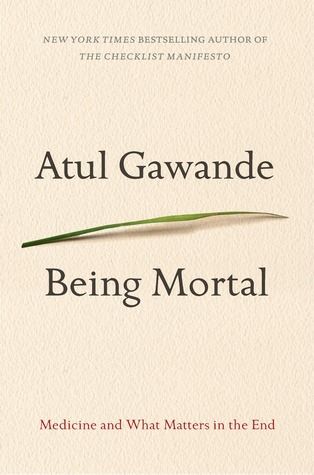
Nature
History
Climate Change
The Sixth Extinction Book Summary
Elizabeth Kolbert
In "The Sixth Extinction," Elizabeth Kolbert takes us on a riveting journey through the tumultuous history of life on Earth, revealing how human activity is driving a catastrophic modern extinction event that may ultimately imperil our own survival.
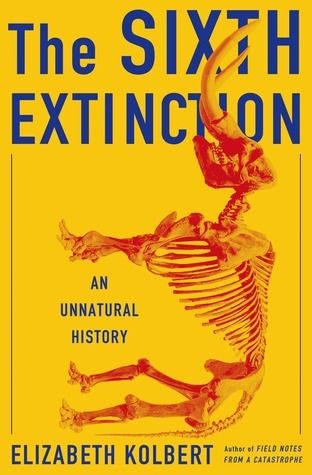
Artificial Intelligence
Technology
Society
Co-Intelligence Book Summary
Ethan Mollick
Ethan Mollick explores the rapidly evolving landscape of artificial intelligence, offering insights, frameworks, and strategies for individuals and organizations to thrive in a future where AI becomes an increasingly powerful collaborator and competitor in domains from creativity to education to work itself.
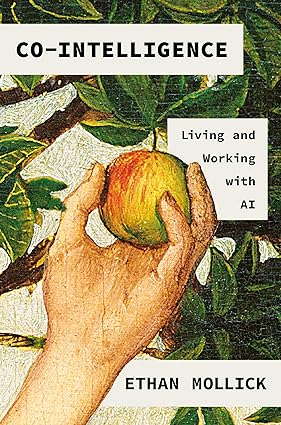
Medicine
Science
History
Society
Everything is Tuberculosis Book Summary
John Green
Tuberculosis has been entwined with humanity for millennia. Once romanticized as a malady of poets, today tuberculosis is a disease of poverty that walks the trails of injustice and inequity we blazed for it.

Sociology
History
Humanity
21 Lessons for the 21st Century Book Summary
Yuval Noah Harari
In "21 Lessons for the 21st Century", Yuval Noah Harari explores the most pressing challenges and opportunities of our time, offering insights on how to navigate a rapidly changing world shaped by technological disruption, political upheaval, and existential uncertainty.
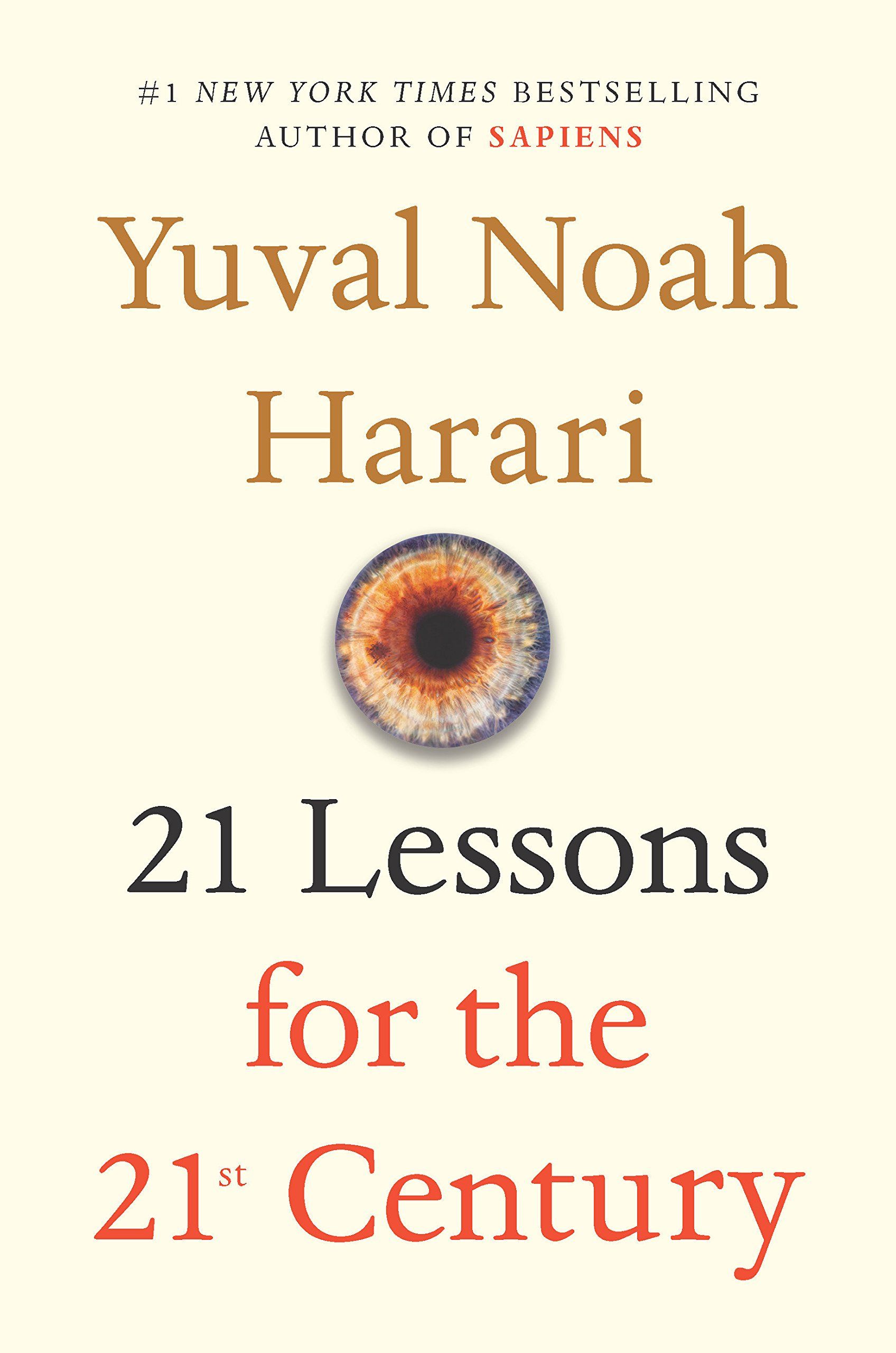
Philosophy
Science
Biology
The Selfish Gene Book Summary
Richard Dawkins
"The Selfish Gene" revolutionizes our understanding of evolution by arguing that genes, not individuals or species, are the fundamental units of natural selection, driving the behaviors and adaptations we observe in living organisms through their relentless pursuit of self-replication.
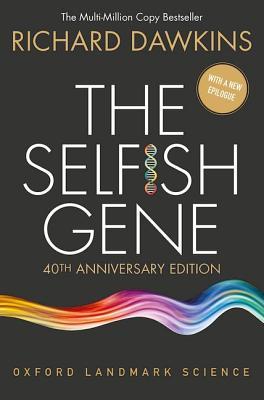
Mindfulness
Religion
Psychology
Science
Philosophy
Happiness
Why Buddhism Is True Book Summary
Robert Wright
Robert Wright explores how Buddhist teachings and meditation practices, particularly from the Vipassana tradition, align with findings from modern psychology and evolutionary theory to diagnose the human condition and provide a path to greater clarity, happiness, and moral progress.
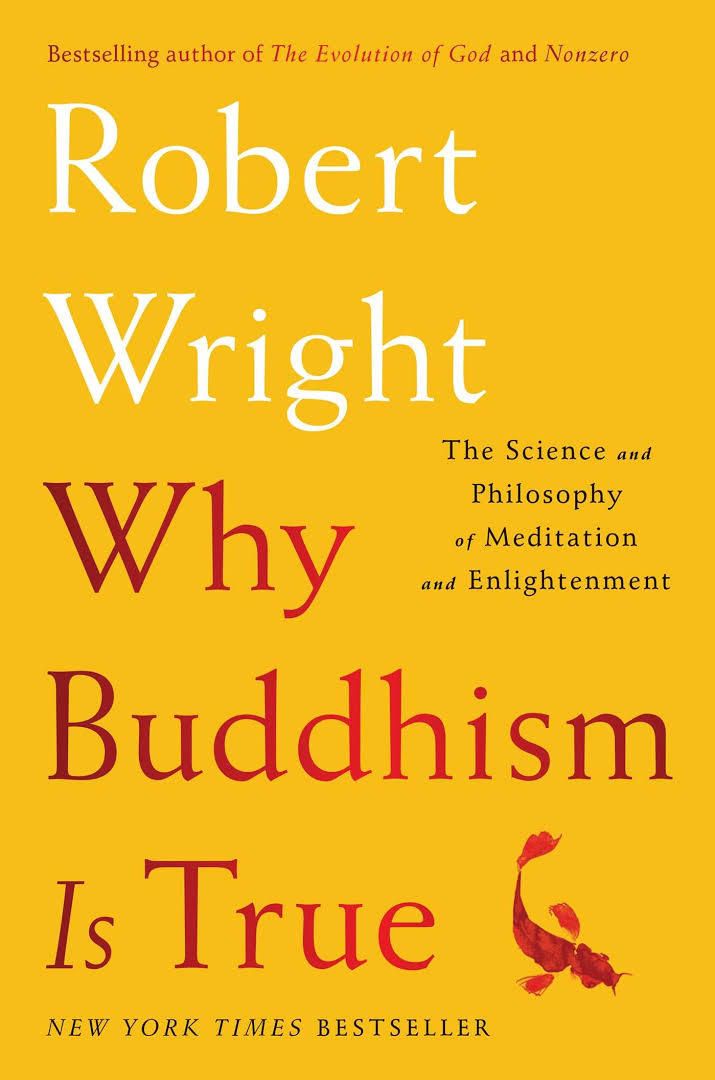
Sociology
Psychology
Science
Revenge of the Tipping Point Book Summary
Malcolm Gladwell
In "Revenge of the Tipping Point," Malcolm Gladwell argues that social epidemics are not random or mysterious, but follow predictable rules and can be shaped by the power of influential individuals, the contagious narratives that frame our world, and the delicate balance of group dynamics.
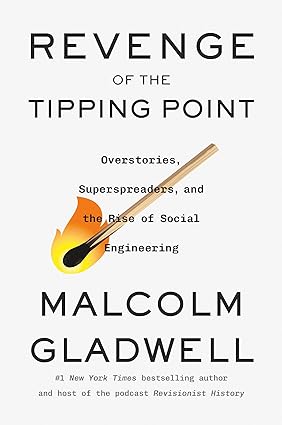
Health
Medicine
Science
Nutrition
Magic Pill Book Summary
Johann Hari
In "The Magic Pill," Johann Hari takes readers on a deeply personal and rigorously researched journey into the complex world of obesity and the revolutionary new weight-loss drugs that promise to fight it, grappling with the profound ethical, societal, and scientific questions they raise about our relationship with food, health, and the future of our bodies.
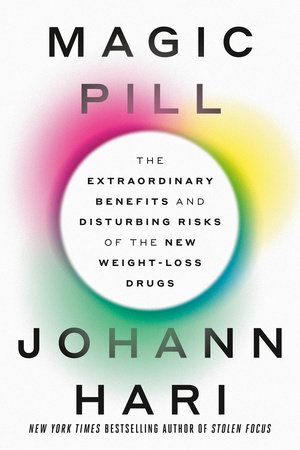
History
Innovation
Science
Where Good Ideas Come From Book Summary
Steven Johnson
Steven Johnson argues that breakthrough innovations arise from connected environments that enable the serendipitous collision of slow hunches, happy accidents, and novel combinations of existing ideas, rather than isolated eureka moments of lone genius.
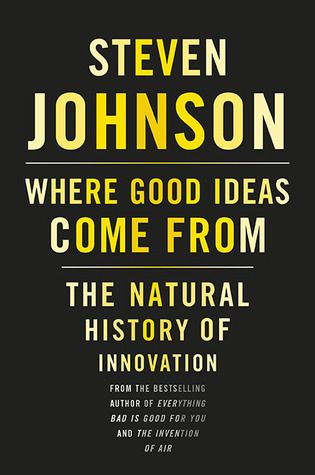
Health
Nutrition
Science
Outlive Book Summary
Peter Attia
In "Outlive: The Science and Art of Longevity," Dr. Peter Attia shares his framework for extending lifespan and optimizing healthspan through the application of leading research in nutrition, exercise, sleep, emotional well-being, and preventive medicine
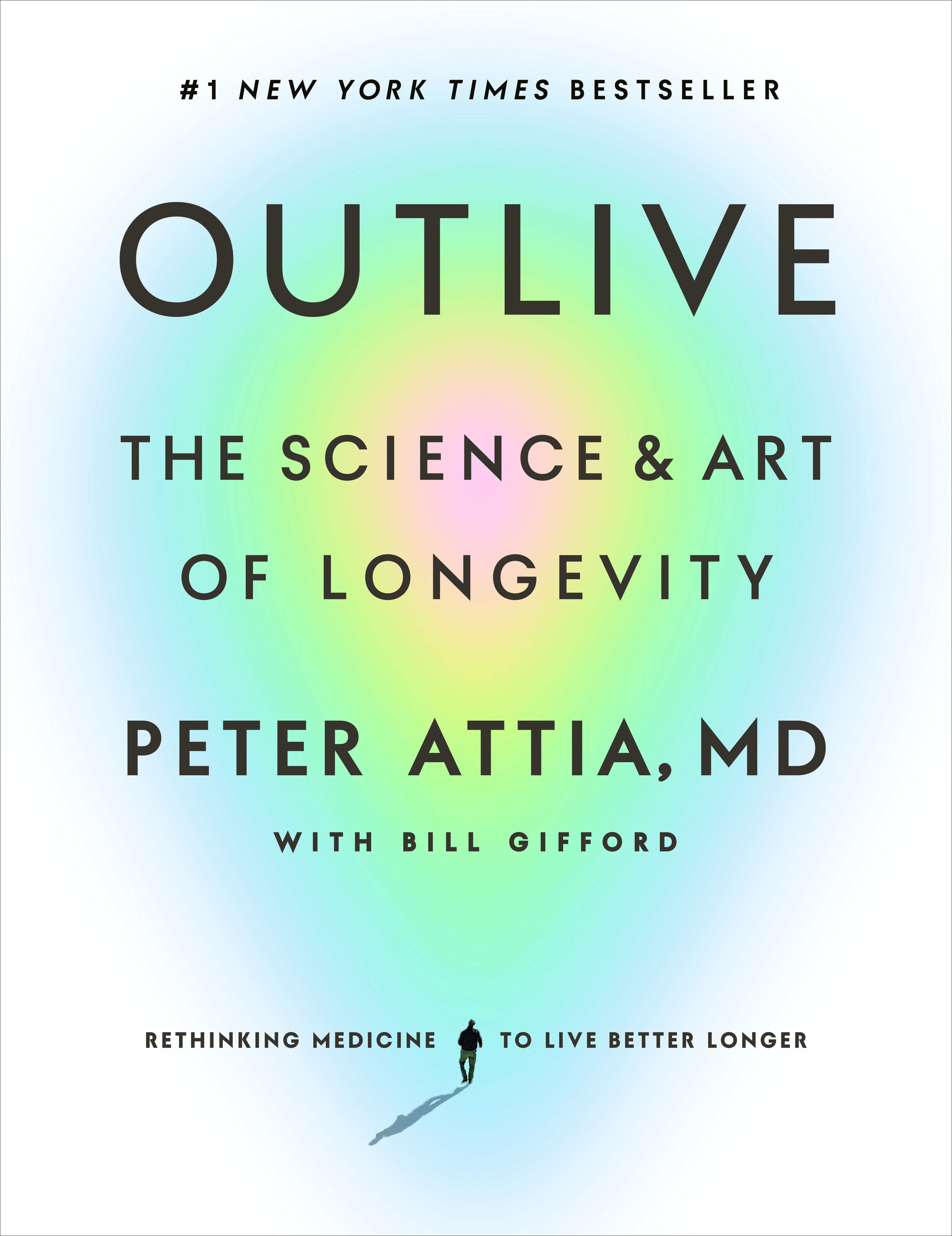
Sleep
Health
Personal Development
Why We Sleep Book Summary
Matthew Walker
Sleep is the single most effective thing we can do to reset our brain and body health, yet we are in the midst of a global sleep loss epidemic that is decimating our health, longevity, productivity. Prioritizing sleep is can improve virtually every aspect of our lives, and this book provides the scientific evidence and practical strategies to make it happen.
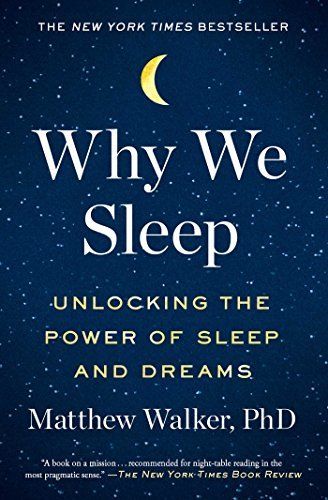
Psychology
Personal Development
Sociology
Economics
The Tipping Point Book Summary
Malcolm Gladwell
The Tipping Point reveals the hidden forces that cause social epidemics - from fashion trends to crime waves - to spread like viruses, and shows how to start and control positive epidemics of our own.
